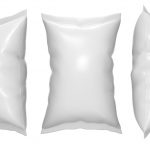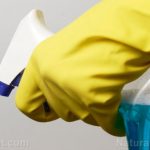
The top 7 most toxic ingredients in your deodorant… are you poisoning yourself every morning?
Wednesday, July 12, 2017 by Frances Bloomfield
http://www.products.news/2017-07-12-toxic-ingredients-in-your-deodorant-poisoning-yourself.html

A great number of personal care products are loaded with toxic chemicals, and deodorant is no exception. Your average deodorant is made up of toxic ingredients that have no place being anywhere near you. What’s worse is that repeated exposure will cause these toxins to build up in your body over time. So before you swipe (or spray) your usual antiperspirant against your skin, keep in mind that these ingredients are what go into it:
- Aluminum compounds – Various forms of aluminum are added to deodorants and antiperspirants to block pores and prevent sweating. Not only do these aluminum compounds interfere with one of the body’s natural ways of expelling toxins, but they’ve also been linked to a number of detrimental health effects. These range from impeding the hormone-processing capabilities of estrogen receptors to negatively affecting proper liver, kidney, and brain function. (Related: DEODORANT WARNING: Aluminum salts found in popular antiperspirant products cause tumor growth.)
- Triclosan – Although it’s been widely used as an antibacterial, antiviral, and anti-fungal agent, triclosan is now becoming more well-known for its impact as an endocrine disruptor. Even more disturbing is the fact that triclosan bioaccumulates and can be detected in blood, urine, and even breast milk.
- Parabens – Like triclosan, parabens are endocrine disruptors that bioaccumulate. Parabens are often used as preservatives in deodorants and many other products, despite their reputation as one of the most harmful additives in the market. Among their known effects are the incitement of early puberty in children, organ toxicity, and the increased likelihood of developing prostate or breast cancer.
- Propylene Glycol (PG) – This moisture-sealing ingredient is at its most dangerous when combined with other chemical additives. Even just a small fraction of PG is harmful, and most commercial deodorants have a high percentage of PG. Exposing yourself to PG everyday puts you at greater risk of liver, kidney, and heart damage, as well as contact dermatitis.
- Artificial colors – Certain artificial colors can induce severe allergic reactions and are considered to be human carcinogens. What’s more is that artificial colors are usually derived from petroleum, giving artificial colors the added effect of suffocating your pores.
- Triethanolamine (TEA) and diethanolamine (DEA) – Both of these are chemical compounds that are used as emulsifiers, and both have been banned in Europe due to their status as human carcinogens. Furthermore, TEA and DEA are known to enter the skin and damage the liver and kidneys.
- Steareth-N – The “N” denotes a number, and while stearth-n is made from vegetables, it’s the process involved in their creation that makes them so harmful. These emulsifying additives are the byproducts of a cheap manufacturing process known ethoxylation, which is intended to weaken harsh chemicals. An unfortunate consequence of ethoxylation is the simultaneous production of carcinogenic 1,4-dioxanes.
If you see any of these ingredients on your deodorant label, don’t hesitate to toss them out. Staying healthy is more important than smelling good. Or rather, smelling good through dangerous toxins and chemicals. There are all-natural deodorants out there that don’t make use of any of these harmful ingredients, and Health Ranger Select Natural Deodorants are among them.
Besides containing zero traces of triclosan, artificial colors, and the like, Health Ranger Select Natural Deodorants are made with wholly organic, non-toxic, non-GMO ingredients that have no ill effects on your body, whatsoever. You’ll smell fresh all day long, without having to worry about accidentally placing carcinogens or petroleum on your person: only organic essential oils, beeswax, and coconut oil. In other words, just the good stuff.
Sources include:
Tagged Under: Tags: aluminum compounds, carcinogens, deodorant, natural deodorants, synthetic deodorants, toxic chemicals, toxic ingredients, toxins





